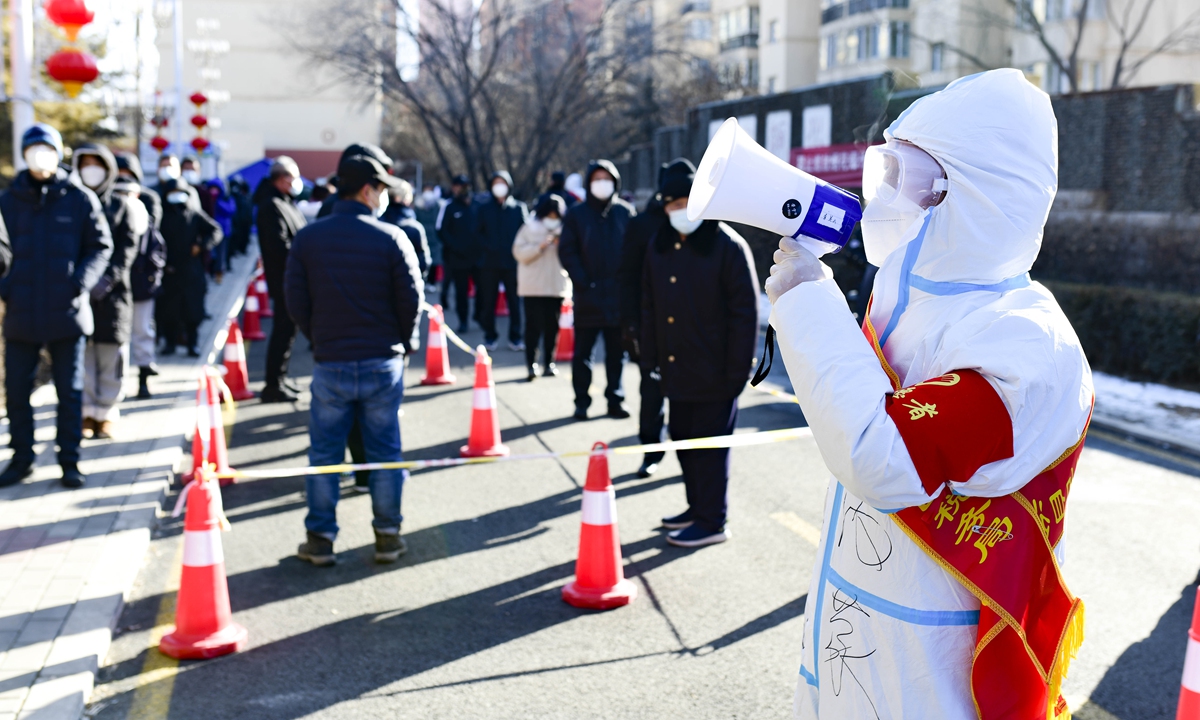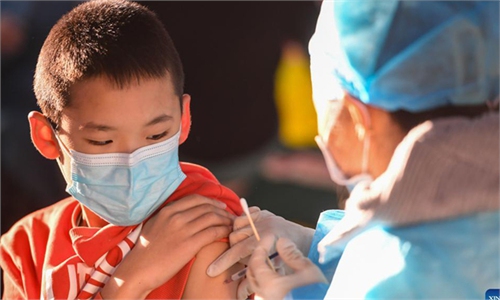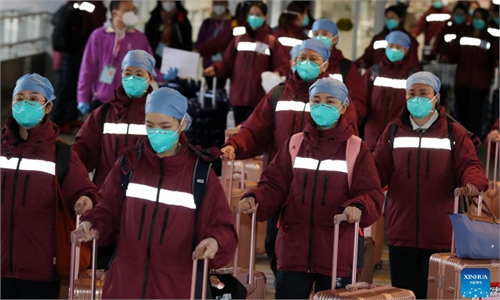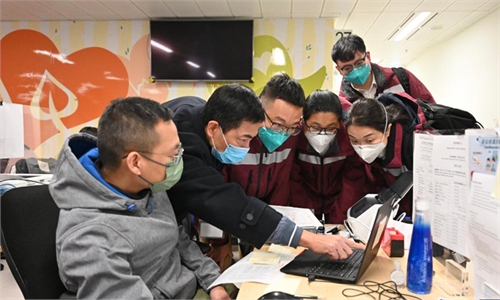
Volunteers guide residents for nucleic acid testing in a residential community in Hohhot on Feb 21, 2022.Photo: IC
As Hohhot of North China's Inner Mongolia Autonomous Region became the latest area to fall victim to another COVID-19 spike fueled by the Delta variant, China reported 71 new local confirmed cases in eight provincial-level regions on Sunday.
Experts noted that these new surges, different from previous rounds, are caused by multiple sources of infection from overseas and are more "invisible," a new challenge that China will face in light of a growing number of mild cases.
Hohhot of Inner Mongolia in the country's northern border area has seen some 161 people infected in six days. The outbreak is believed to have been imported from overseas, and it then spread among local communities in a hidden way, triggered by two wedding banquets held over a week before the first infection was reported.
The virus sequence of the first three cases showed that they are of the Delta variant, undetected in the databases of both local and imported cases in China during previous outbreaks.
While most of the newly confirmed cases in Hohhot were found among people who were already under quarantine in locked-down areas, with the number of positive cases declining, the National Health Commission warned that the epidemic in Hohhot is still at an early stage and has led to clustered infections in crowded public venues, and the risk of community spread and spillover to other regions is still high.
The Hohhot epidemic has so far affected two other regions in China, neighboring Baotou city with a total of nine confirmed cases and Jinzhong in North China's Shanxi Province with five positive ones, who returned from Hohhot on Thursday.
Apart from Inner Mongolia, the Chinese mainland has also seen surges in East China's Jiangsu, North China's Shanxi, Northeast China's Liaoning and Heilongjiang, South China's Guangdong, and Southwest China's Sichuan and Yunnan provinces in recent days.
The country has in response identified five high-risk regions and 128 medium-risk regions nationwide.
Suzhou of East China's Jiangsu Province, home to over 10 million people, is fighting an Omicron rampage that has infected 91 confirmed cases and 23 asymptomatic ones since February 10, when the first case, an asymptomatic one, was reported to be a staff member of an enterprise engaged in the receipt and delivery of imported materials (not cold-chain) in warehouses. The city had not seen local positive cases in several months before reporting that.
To prevent the further spread of COVID-19, Jiangsu Province is speeding up the building of a "fence" against the epidemic, with all primary and middle schools in Suzhou suspending classes and closing off tourist sites. Some 6,200 medical workers are being dispatched to help Suzhou conduct virus screening tests.
Wuhan, capital city of Central China's Hubei province, reported four new COVID-19 cases on Monday. Local authorities immediately launched the emergency response mechanism and transferred them to the designated Jinyintan hospital. The city was the first in China to be hit by COVID-19 about two years ago and had reported zero domestic infections for months.
Wang Guangfa, a respiratory expert at Peking University First Hospital, noted that these outbreaks in China have shown different characteristics from previous ones, as the surges are caused by multiple, individual sources of infection instead of a single one, which has become a more complex challenge for China's epidemic prevention.
For one thing, the highly contagious Omicron and Delta variants are both dominant in countries outside of China, putting more pressure on virus imports; for another thing, there are more light cases or asymptomatic cases as a result of vaccination, the expert pointed out.
"Leaving aside the Omicron infections, the symptoms of vaccinated patients are very light even with Delta, a variant that would normally lead to more severe symptoms. That has made the virus more hidden," Wang told the Global Times on Monday.
Wang suggested that apart from the dynamic zero-COVID approach, authorities should pay closer attention to situations abroad, so as to better cope with new challenges.



